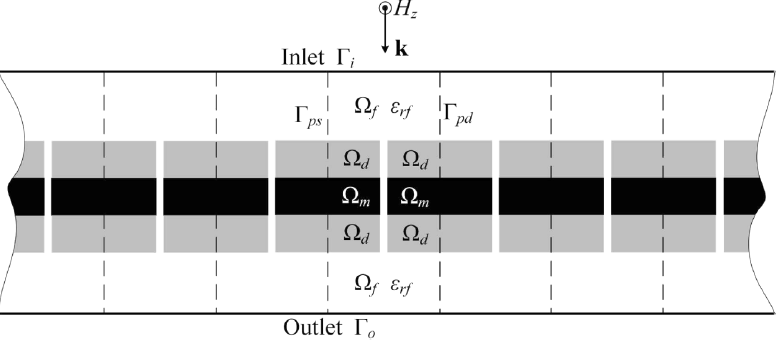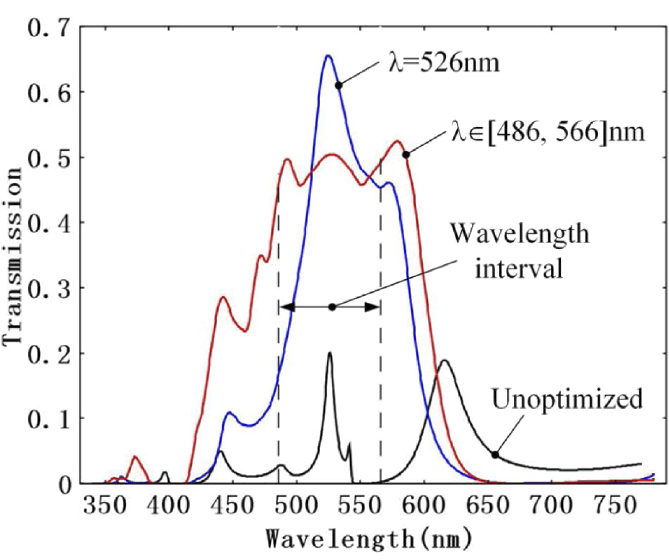Author: |
Editor: LIN Yu | Nov 18, 2021
Extraordinary optical transmission (EOT) is the phenomenon of the greatly enhanced transmission of light through a subwavelength aperture in an otherwise opaque metallic film patterned with a regularly repeating periodic structure. The mechanism of EOT is attributed to the scattering of surface plasmon polaritons (SPPs). Tremendous potential applications of EOT include several newly emerging areas, e.g., subwavelength optics, optoelectronic devices, wavelength-tunable filters, optical modulators, and chemical sensing. To enhance the EOT performance, we have devoted to finding the geometrical configurations of resonant nanostructures by using a topology optimization approach.

Fig. 1 Computational domain for the topology optimization of bilateral nanostructures at the end-faces periodic metallic slits.
The topology optimization approach is implemented based on the material interpolation between the metal and free space in the design domain for the bilateral nanostructures localized at the end-faces of periodic metallic slits. The cross-section of the periodic metallic slits is illuminated in Fig. 1 with a uniform monochromatic TM wave propagation.

Fig. 2 (A) Derived bilateral nanostructures for the periodic metallic slits with extraordinary optical transmission corresponding to different incident wavelengths in the visible light region; (B) Magnetic field distribution, in the periodic metallic slits with topologically optimized bilateral nanostructures, corresponding to the geometrical configurations shown in Fig. 2A(a~f), respectively.
Using the outlined topological optimization procedure, the bilateral nanostructures are derived as shown as Fig. 2A, with corresponding magnetic field distribution shown in Fig. 2B(a~f). These results demonstrate that the derived nanostructures sticking to the inlet side of the subwavelength slits excite SPPs and guide the SPPs propagating into the metallic slits; the two streams of SPPs in the slits propagate along the two sides of the metallic slits, couple with each other, the Fabry-Pérot resonance of these two streams of SPPs is established sequentially with strengthened transmission; at the outlet side, the resonating SPPs is scattered and radiated into the free space by the derived nanostructures. The presented method can be extended to enlarge the EOT bandwidth of the periodic metallic silts. By expanding the EOT bandwidth, the sensitivity of the transmissivity to the incident wavelengths can be reduced in a specified wavelength range. The spectra of broadband EOT are shown in Fig. 3. The presented topology optimization can also provide an approach to control the red or blue shift of the transmission peak or localize the resonant performance at a desired frequency.

Fig. 3 Spectra of broadband EOT.
The authors are grateful to Prof. LIU Yongmin of Northeast University in USA, for his inviting to publish this work to the Special Issue of Optical Materials Express. This work is supported by the Innovation Grant of Changchun Institute of Optics, Fine Mechanics and Physics (CIOMP), the Fund of State Key Laboratory of Applied Optics (SKLAO), the National Natural Science Foundation of China (No. 51875545) and the Youth Innovation Promotion Association of the Chinese Academy of Sciences (No. 2018253). The authors are grateful to the reviewers for their kind attention and valuable suggestions.
